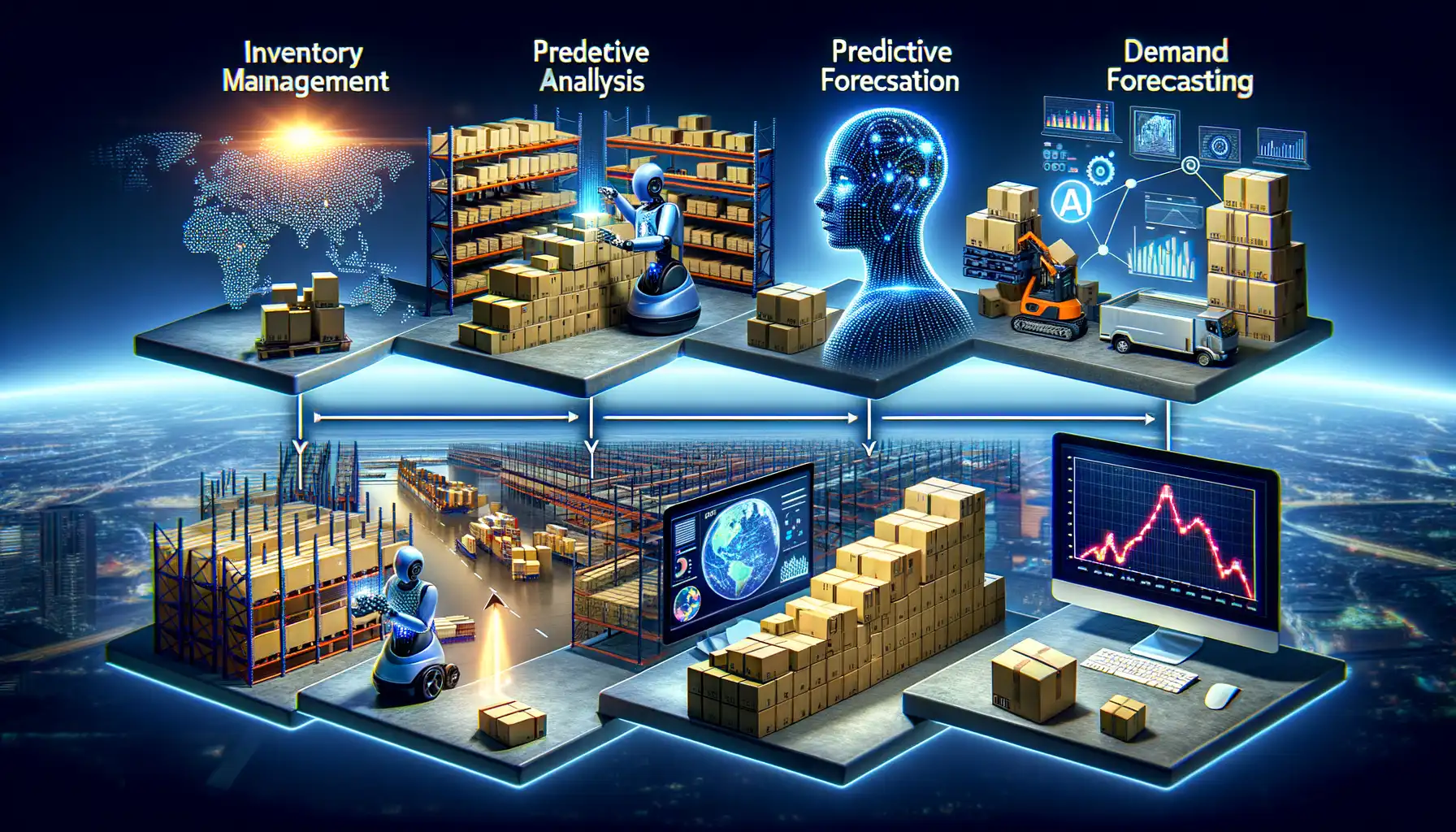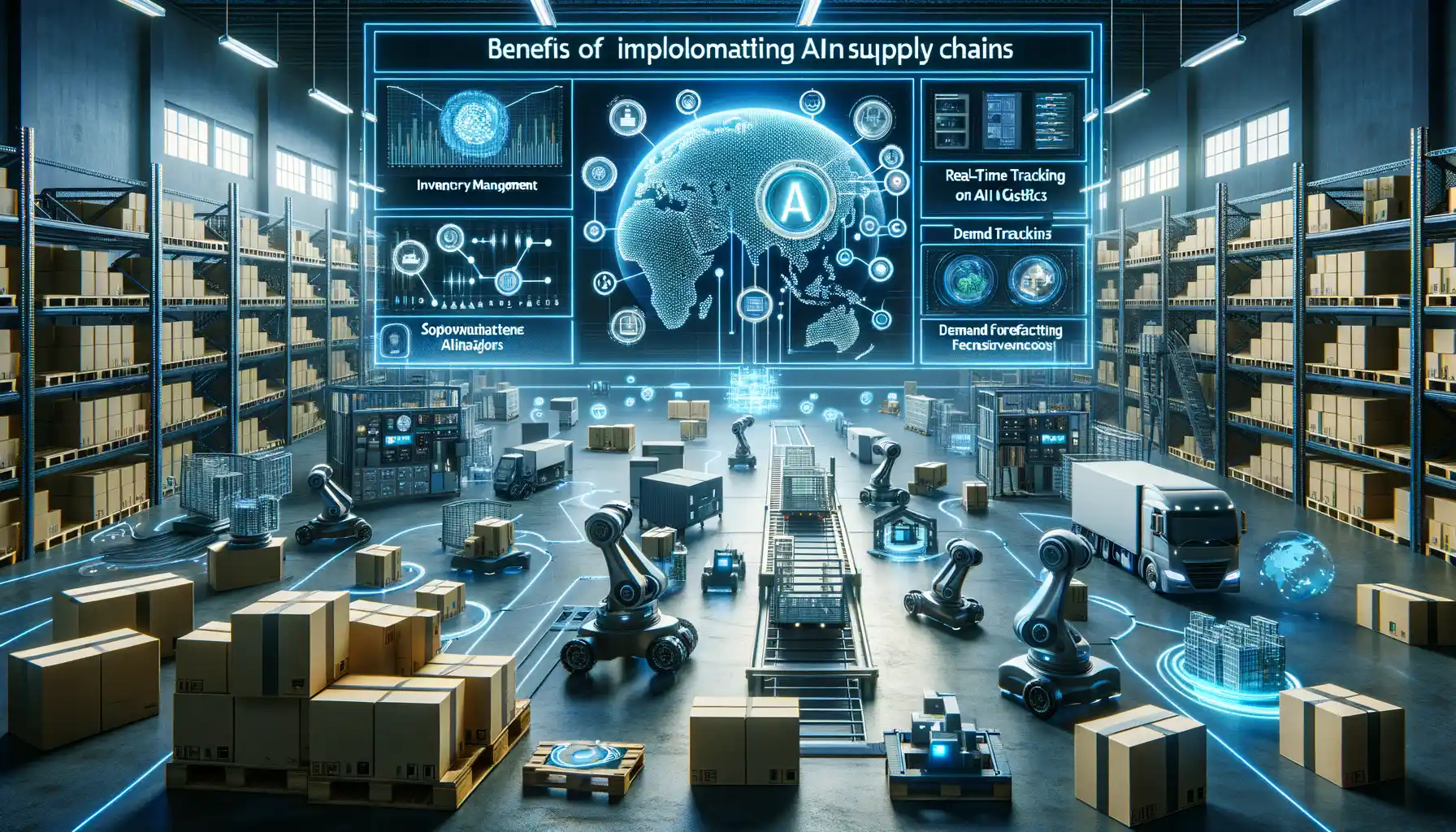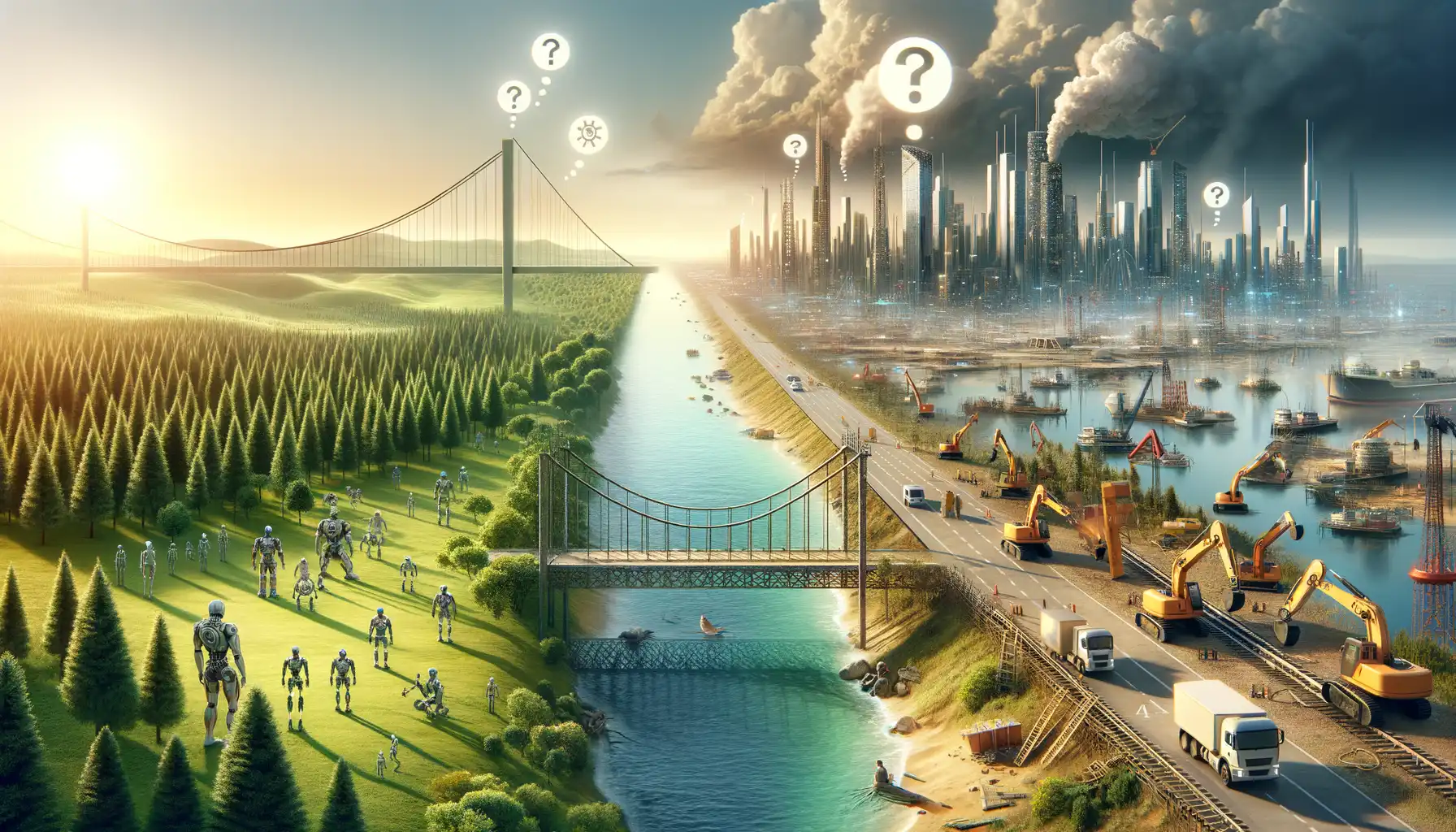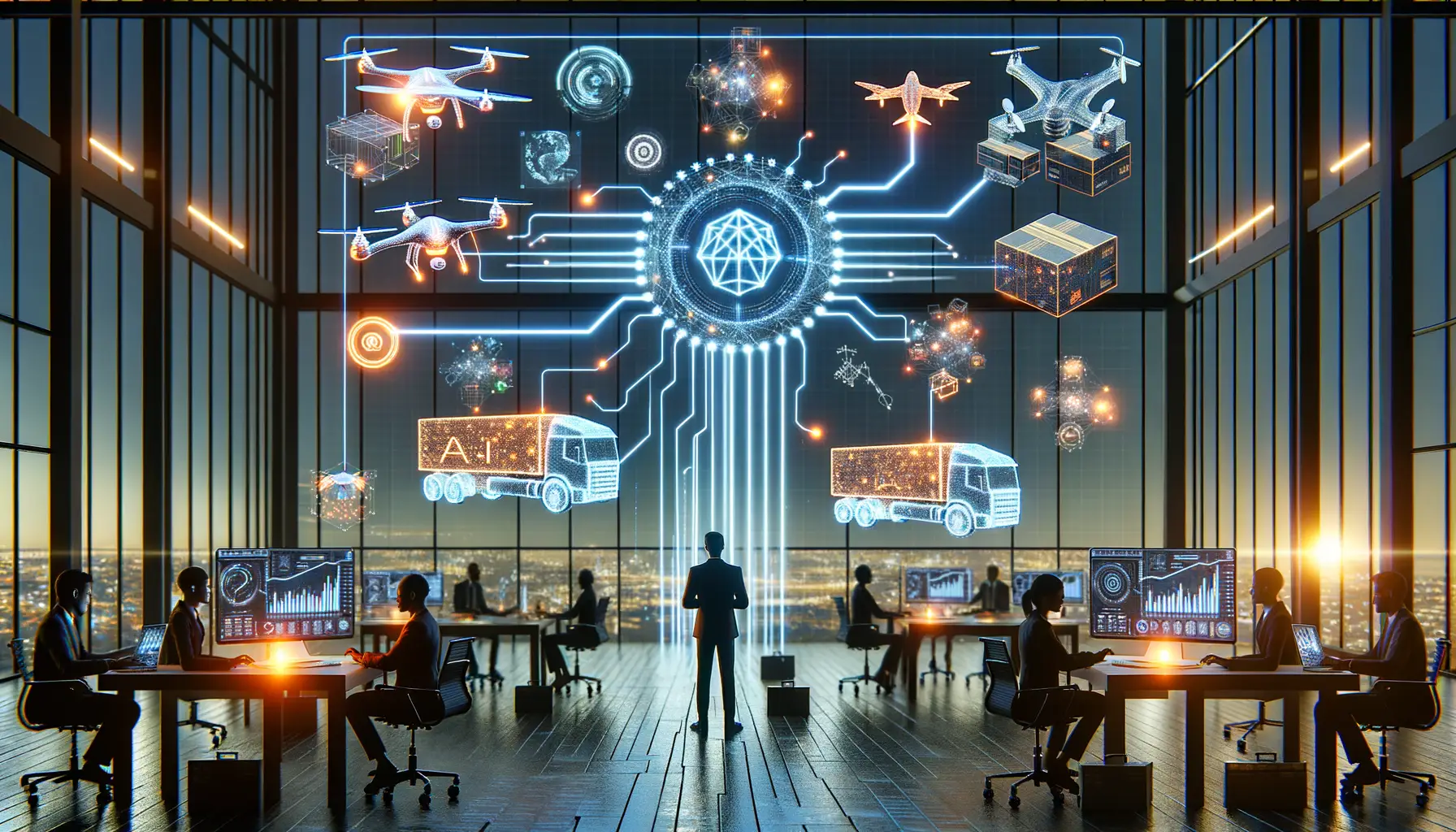Introduction to AI in Supply Chain Management
Imagine a bustling warehouse or a container ship loaded with goods from all over the world. Now picture invisible threads connecting every step of the process—threads spun by Artificial Intelligence (AI). That’s right: AI isn’t just for high-tech gadgets or futuristic robots; it’s also revolutionizing the lifeblood of global commerce, the supply chain. But how exactly does this tech wizardry fit into the complex maze of supply chain management?
How AI Brings Precision to Complexity
The modern supply chain is a symphony of moving parts, from raw materials sourcing to last-mile delivery. Throw in unpredictable hurdles like weather events or fluctuating demand, and things can derail faster than you think. Enter AI—a powerhouse capable of transforming disorder into actionable insights. Through tools like data analytics, machine learning, and predictive modeling, AI helps organizations untangle their most intricate logistics challenges.
Consider this: instead of spreadsheets and assumptions, AI can forecast demand spikes weeks in advance based on factors like sales trends or even social media buzz. That’s not just smart—it’s transformative.
Where AI Meets Human Ingenuity
While AI works its magic in optimizing inventory or uncovering bottlenecks, it doesn’t replace human strategy. Think of it as your teammate, not your boss. Together, humans and AI can:
- Anticipate disruptions—like knowing when a port strike could delay shipments.
- Minimize waste—by only producing what’s needed, when it’s needed.
- Wow customers—with faster deliveries and personalized experiences.
AI invites us to see the supply chain not as a daunting puzzle but as an opportunity for innovation. Ready to see where it can take you? Let’s dive deeper!
Key Applications of AI in Supply Chain Processes

Revolutionizing Demand Forecasting and Inventory Management
Picture this: a warehouse humming with activity, shelves stocked efficiently, and no last-minute scrambles to fill unexpected orders. That’s the magic of AI in action. By analyzing mountains of historical sales data, seasonal trends, and even external factors like weather or global events, AI-powered systems can predict future demand with uncanny precision.
Think about how this impacts inventory. Instead of overstocking and praying it sells, or running out of a hit product when demand spikes, businesses can strike the perfect balance. With solutions like AI-driven demand forecasting, companies stop wasting resources and start delivering the goods—literally.
- Forecast customer needs months in advance.
- Adjust inventory dynamically, even for sudden surges or dips.
- Cut down on excess storage costs by maintaining just the right stock levels.
Optimized Logistics that Border on Genius
Shipping products from Point A to Point B might sound straightforward, but logistics is where supply chain management gets thrilling (and stressful). Enter AI, which transforms logistic planning into an elegant symphony.
With AI systems optimizing delivery routes, transport companies can find faster, more fuel-efficient paths. Imagine a driver’s app re-routing them away from traffic jams or weather delays in real time. Even beyond routing, AI enables smarter scheduling of shipments and load balancing, ensuring trucks aren’t hauling half-empty containers.
The result? Happier customers receiving their packages ahead of schedule, reduced carbon footprints, and significant cost savings. Technologies like predictive maintenance also keep fleets running smoothly by flagging mechanical issues before they snowball.
AI doesn’t just manage logistics; it makes it smarter, leaner, and more resilient. Who knew algorithms could give you wings—or wheels?
Benefits of Implementing AI in Supply Chains

Transforming Supply Chains with Smart Efficiency
Imagine a supply chain that doesn’t just react to disruptions but predicts and prevents them. Sounds like magic, right? It’s not—it’s AI at work. By implementing AI in your supply chain, you’re not just tweaking processes; you’re rethinking them entirely. This technology breathes life into the data sitting idly in spreadsheets, transforming it into actionable insights and smarter decisions.
With AI, your forecasting gets a crystal ball upgrade! Instead of guessing demand, AI analyzes trends, consumer preferences, and even unpredictable factors like weather patterns. Picture this: a retailer avoiding overstock by knowing exactly when a product will peak—and all thanks to AI’s predictive powers.
- Reduced costs: Optimize inventory levels, saving storage space and money.
- Improved delivery times: Dynamic route planning gets shipments where they need to go faster.
- Minimized waste: Smarter predictions keep excess production and spoiled goods in check.
Revolutionizing Decision-Making with Real-Time Insights
Does decision fatigue ever weigh you down? AI takes that load off with real-time analytics. Imagine monitoring every link in your supply chain—right now—not tomorrow, not after crunching numbers manually. If a factory slows down or a shipment faces delays, AI sounds the alarm immediately.
Case in point: companies like Amazon rely on AI to synchronize supply and demand so seamlessly, it feels like wizardry. But don’t think you need to reach their scale to see the benefits. Even small-scale businesses can tap into AI for laser-focused insights—like what products to stock more of, or when to negotiate a new supplier deal.
When AI joins your team, it’s not just about keeping up—it’s about staying ahead. A constant stream of accurate data ensures you’re making decisions rooted in clarity, not guesswork.
Challenges and Considerations for AI Integration

Overcoming the Hurdles of AI Integration
Adopting AI in supply chain management isn’t as simple as flipping a switch—far from it. While the technology promises transformative results, the road to integration can feel like navigating a labyrinth. Let’s not sugarcoat it: challenges are part of the process.
First off, there’s the financial elephant in the room. Implementing AI often comes with a hefty price tag. From sophisticated software to hiring skilled data scientists, the initial setup can send budgets spiraling. And yet, here’s the irony—avoiding this investment could mean falling behind competitors who are already harnessing its power.
Then, there’s the delicate dance of data. Supply chains thrive on good data, but what if your data is incomplete or scattered across five outdated systems? AI needs clean, structured, and accessible information to work its magic. If your current data feels like an unwieldy puzzle, you’re not alone—but it’s something that must be tackled head-on.
- Cultural resistance: Employees may fear losing their jobs or dislike the idea of robots calling the shots.
- Lack of expertise: Not every company has an AI guru waiting in the wings.
The truth? Integrating AI into your supply chain requires grit, vision, and a willingness to roll up your sleeves.
Future Trends in AI-Powered Supply Chain Management

The Rise of Predictive Synergy
Imagine a supply chain that doesn’t just respond but *anticipates*. Thanks to advancements in AI, this dream is rapidly becoming reality. We’re entering an era of predictive synergy, where algorithms don’t just process data—they connect dots humans might overlook. Picture this: sensors inside shipping containers alerting a factory days before potential delays. Or AI-driven platforms mapping out alternative routes for deliveries *before* storms even gather on the horizon.
But it’s not just about solving problems; it’s about creating harmony. With technologies like digital twins, businesses are crafting virtual replicas of their entire supply chains. These digital blueprints can simulate scenarios, identify bottlenecks, or test new strategies—all without disrupting daily operations. It’s like having a crystal ball, but powered by machine learning magic instead of mysticism.
Personalized Supply Chains at Scale
Here’s a wild thought: what if supply chains became as personalized as your Spotify playlist? AI is making this possible with its ability to handle mind-boggling amounts of customer data. This means hyper-specific stock replenishment, dynamic pricing models, and even custom-made delivery schedules.
These aren’t sci-fi fantasies; they’re glimpses of a not-so-distant future. With AI, supply chains are no longer rigid, one-size-fits-all systems. They’re becoming living, breathing ecosystems, flexing and adapting in real time to keep pace with ever-changing consumer expectations.
